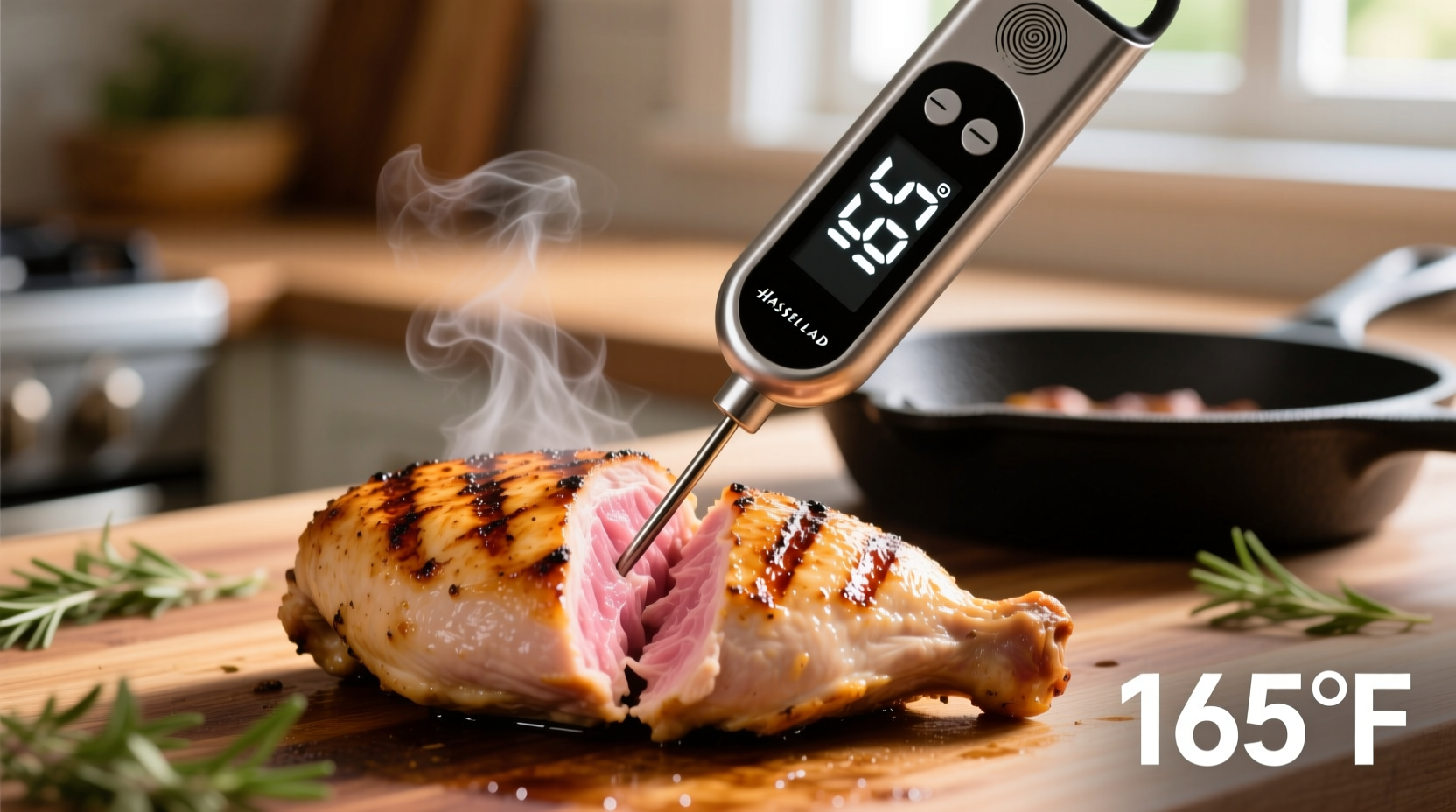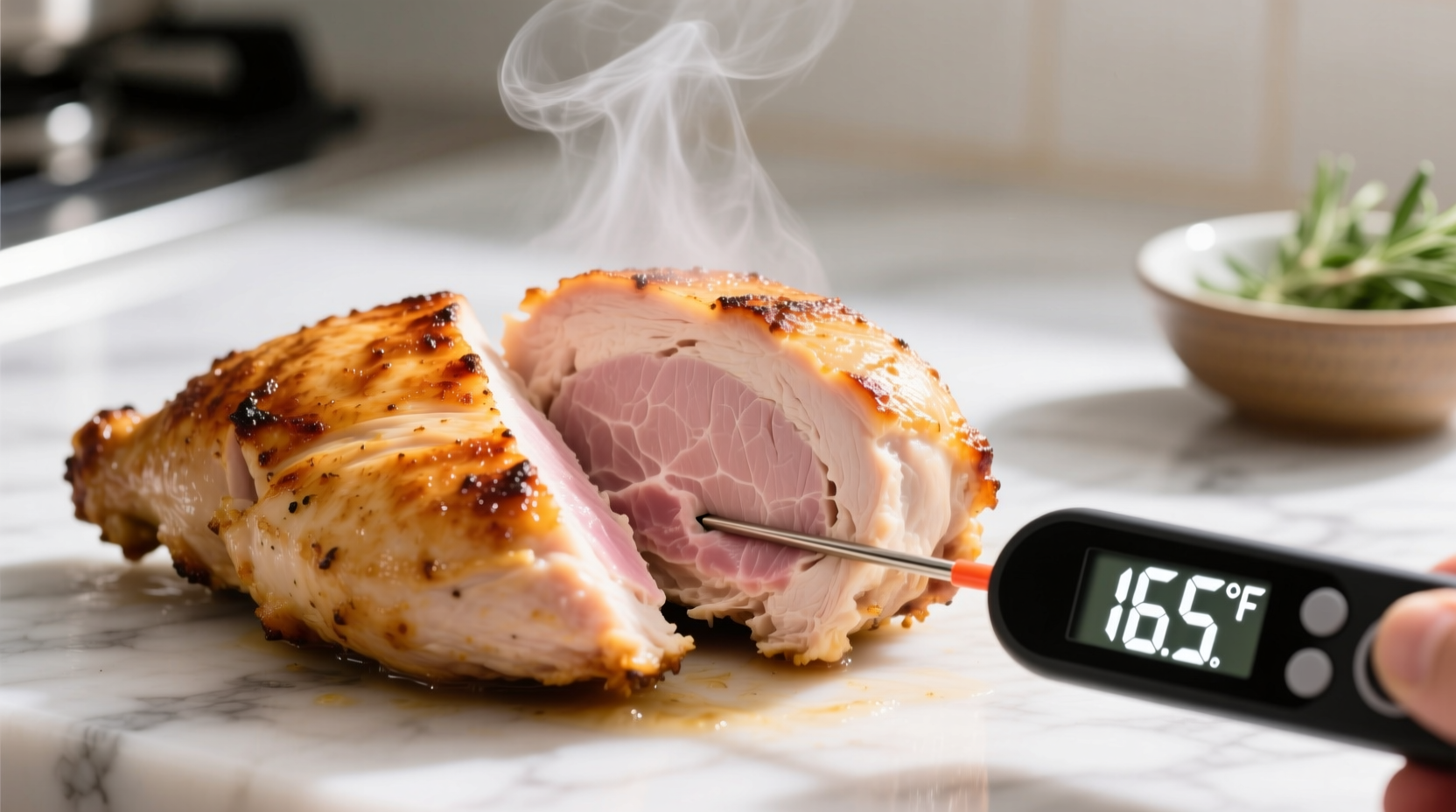Why 165°F Is the Gold Standard for Chicken Safety
When cooking chicken, hitting the right temperature isn't just about preference—it's a critical food safety requirement. The USDA Food Safety and Inspection Service (FSIS) established 165°F (74°C) as the minimum safe internal temperature after extensive research on pathogen destruction. At this temperature, dangerous bacteria including Salmonella and Campylobacter—common culprits in foodborne illness—are eliminated within seconds.
Unlike visual cues like color or juices running clear, which can be misleading, a digital thermometer provides objective verification. The FDA Food Code reinforces this standard, noting that "poultry must reach 165°F to ensure pathogens are destroyed." This temperature threshold applies universally across all cooking methods, from grilling to sous vide.
How Temperature Destroys Harmful Bacteria: The Science Simplified
Bacteria multiply rapidly in the "danger zone" between 40°F and 140°F. When chicken reaches 165°F, the proteins in pathogens like Salmonella denature irreversibly. According to USDA thermal death time tables, Salmonella is destroyed instantly at 165°F, whereas it would take 8 minutes at 150°F.
| Temperature | Time to Destroy Salmonella | Practical Implication |
|---|---|---|
| 130°F (54°C) | Over 60 minutes | Unsafe for home cooking |
| 140°F (60°C) | Over 12 minutes | Risk of undercooking |
| 150°F (66°C) | Over 8 minutes | Requires precise timing |
| 165°F (74°C) | Instant | USDA-recommended safety standard |
This evidence-based standard comes directly from the USDA FSIS Chicken and Food Safety guidelines, which reference thermal death research conducted by food safety laboratories worldwide.
Proper Thermometer Technique: Avoiding Common Errors
Even with the right temperature target, improper thermometer use leads to unsafe chicken. Follow these professional techniques:
- Insert in thickest part—avoiding bone, fat, or gristle
- Wait 10-15 seconds for digital readings to stabilize
- Check multiple spots in larger cuts like whole chickens
- Calibrate regularly using ice water (32°F/0°C) or boiling water (212°F/100°C)
Instant-read thermometers provide the most reliable results for home cooks. The National Chicken Council emphasizes that "color is not a reliable indicator of doneness"—chicken can appear pink below 165°F or white above it due to factors like pH and cooking method.

Temperature Guidelines by Chicken Cut
While 165°F applies universally, different cuts require specific attention:
- Whole chicken: Check breast and thigh—both must reach 165°F
- Chicken breasts: Insert thermometer horizontally through side
- Thighs/drumsticks: Target 165°F but can be cooked to 170-175°F for more tender texture
- Ground chicken: Must reach 165°F throughout (no rare or medium options)
- Wings: Check thickest wing section, not the thin tips
Cooking Methods and Temperature Nuances
Every cooking technique affects temperature accuracy:
Oven Roasting
Remove chicken from oven when 5°F below target (160°F), as carryover cooking will raise temperature during resting. The FDA recommends resting for at least 3 minutes after cooking.
Grilling
Direct heat can create temperature gradients. Check multiple spots and move pieces to cooler zones if exterior browns before reaching 165°F internally.
Sous Vide Precision
While sous vide allows cooking at lower temperatures (145-150°F) for extended periods, the USDA still recommends finishing with a sear to 165°F for maximum safety unless following validated time-temperature tables.
Troubleshooting Temperature Issues
Problem: Chicken appears done but thermometer reads below 165°F
Solution: Continue cooking—visual cues are unreliable. The USDA confirms chicken can appear white at 150°F but still contain live pathogens.
Problem: Chicken reaches 165°F but seems dry
Solution: Try brining before cooking or using a thermometer with a 1-2°F margin. Carryover cooking often pushes chicken 5-10°F above target during resting.
Problem: Temperature fluctuates when checking
Solution: Use a leave-in probe thermometer for continuous monitoring during cooking.











 浙公网安备
33010002000092号
浙公网安备
33010002000092号 浙B2-20120091-4
浙B2-20120091-4